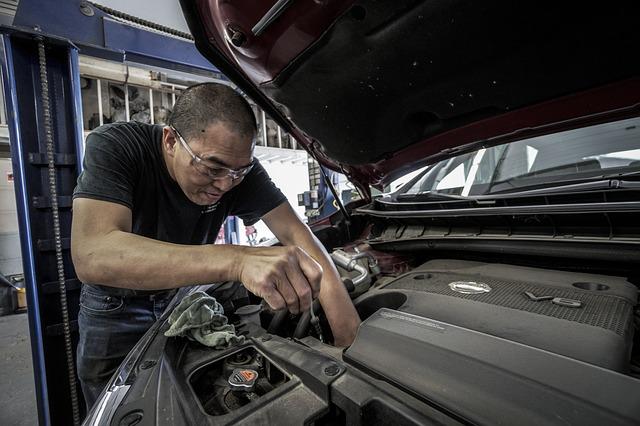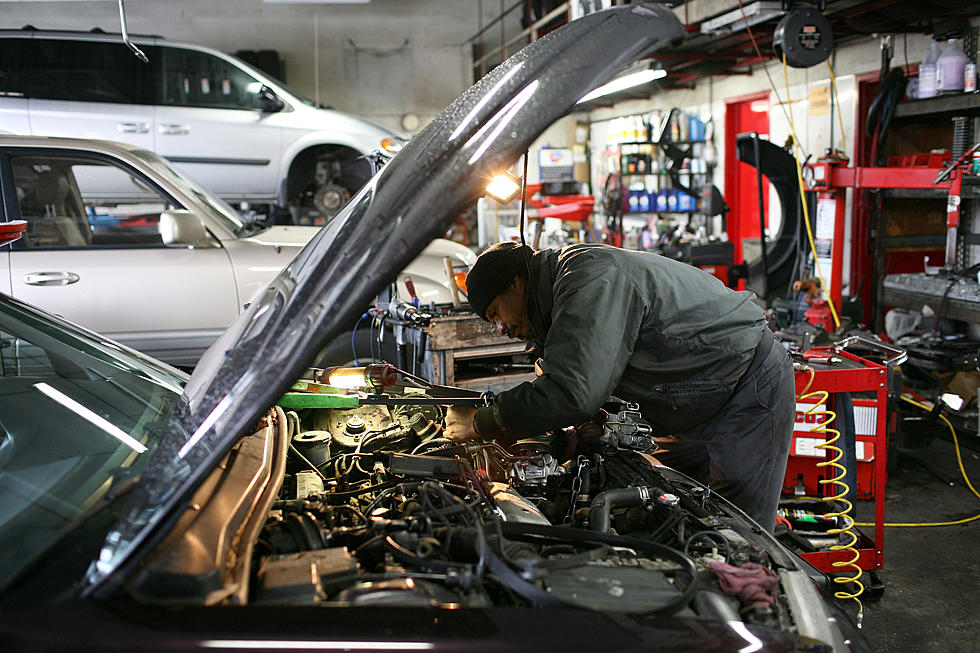
If you're just purchasing a vehicle and require a loaner to get it picked up, you might want to inquire about a dealership loaner car. If you do, you will have to go through some paperwork to get the loaner. This may include your driver's license, information about your insurance, and registration. You can usually get a loaner car within a few hours. Here are some benefits as well as costs to this service.
Benefits
One of the most effective ways to attract new customers is by offering a loaner car. If you offer a similar vehicle to your current stock, it can help your dealership win new customers. The loaner car can be used to demonstrate new technologies, interior refinements, or improved fuel efficiency. Many dealerships leave sales numbers on the loaners. However, other dealers offer this service as a complimentary option.
Another advantage of a loaner automobile is the fact that you can save money. They are often branded as a used car by dealerships, saving you hundreds of thousands or even thousands. The staff of dealerships take good care of courtesy cars even though they don't have to be registered. They are regularly serviced and any damage repaired. Therefore, the loaner car will have optimal performance. While you wait for your new car to arrive, your courtesy vehicle can be driven while the car is being repaired.

Prices
Providing a free loaner car to customers is an excellent way to offset the cost of a service call or maintenance, and it can also be used as an opportunity to sell additional services. Customers who have the opportunity to drive the car are more likely than others to approve work. According to a recent survey, 78% of mass-market brand owners see loaner cars as a test-drive opportunity. The next new-car sale could be in the service department. Here, they may be more likely approve work that is not their specialty.
Negotiate the mileage limit in order to avoid paying more to borrow a car. Some dealerships charge 15 cents per mile, which is reasonable. However, the vehicle may not be in as good of condition as you'd like, so it's important to negotiate the price. Once you've reached an agreement on the price, it is possible to submit a financing application, bank check, cash, or a receipt for the final payment.
Types
A dealership can provide loaner cars in the form of courtesy cars or used cars that are reconditioned. These cars are often more expensive than rental cars but can still save you hundreds to even thousands of dollars. These loaner cars have been reconditioned and maintained by the dealership. They maintain the car properly and ensure that it runs at its best. There are many benefits to using them.
The type of loaner automobile available will vary depending on the brand. The GLA, GLE and GLS models of Mercedes-Benz are the most common loaner vehicles. BMW offers the X7 & X5 models as loaner vehicles. You can also request a test-drive in the model that interests you. Be sure to bring your driver's license along with any identification. You may also find the exact same vehicle at a dealership.

Insurance
If you are in the process of purchasing a new car, you may be wondering if you need to purchase insurance for a loaner car from the dealership. Many dealers offer customers a loaner car program. Applicants need to know that they can apply as long their driver's license and proof of insurance are present. Some dealerships require proof of ownership, others don't. A local dealership may also have age restrictions. Insurance policies can also vary. Lender cars are generally available to drivers over 25. Some dealerships require drivers to have a valid license. Others require drivers to be 21 or older. No matter your age, many policies that cover loaner cars require you to have a valid driver's license. This protects your rights.
Although a loaner car is a great way of getting a vehicle, it is essential to ensure that it is properly insured. The dealership may offer excess or primary coverage, which can be helpful in the event of an accident. The loaner car policy can also include coverage for repair costs. This is a valuable benefit in case of an accident.
FAQ
Is it important which college I go?
It's not true. There is no difference between colleges in terms of how to get into the automobile industry. But, there are better programs at some schools than others. Look elsewhere if you want something more niche.
How can I prepare myself for a mechanic apprenticeship
It is important to have an understanding of what you are going into. You must understand the workings of cars. This will help you to plan your first day in the garage.
You also need to know how to fix simple problems such as broken lights, tires, etc.
This will teach you how to diagnose problems and fix them yourself.
It is also important to know how the different pieces fit together in order to put them together again.
Finally, you should be able use tools safely.
These are all things that will make you a competent mechanic.
What do I need to know about car mechanics?
To be an auto mechanic, you don't have to know much about cars. You only need to know how to fix them. Most people start by fixing things like changing tires or fitting brake pads.
You'll need the ability to read and understand diagrams and to follow simple rules of good practise. It is also important to know how to determine if parts are damaged or need to be replaced.
It is important that you have proper training and guidance before you attempt to repair vehicles. This is especially true when you are dealing with costly components like engines and transmissions.
Even though you won’t need to know much more about cars, you will still need to have an in-depth understanding of mechanics and physics. This involves understanding how engines work and how brakes work.
It is important to realize that you must be ready for all types of situations. For example, you may find yourself working on a vehicle that has been involved in a serious accident. You will also need to be able to deal with accidents and breakdowns.
Finally, you must be willing to learn new skills quickly. It is important to be able both to diagnose problems and perform simple maintenance tasks, such as tightening nuts.
Is it worthwhile to become a mechanic?
This question is dependent on your life goals. If you are looking to make money, then yes. But if meaning and purpose is what you seek, then no.
You don't need to be a mechanic if you don't know how. It's not going to make you rich. You won't become famous. It is unlikely that you will be made famous.
You'd have to spend years learning how things work. Then you'd still have to pay someone else to fix your car when it breaks down. That's why most people don't bother doing it at all. They find something better to do instead.
Let's sum it up: If you want to make a lot of money, then do so. But if you want to live a meaningful life, stay away from the mechanic's industry.
What qualifications do you need to be a mechanic?
A series of exams is necessary to become a mechanic. These include:
-
A general knowledge exam
-
A practical examination
-
An apprenticeship test
These tests are intended to make sure you have a solid understanding of the basics of mechanics before you can start your career as a mechanic.
Once you pass these tests you can become a mechanic. You'll still need an apprenticeship. This will include training in the trade.
To fully understand the mechanics of vehicle repairs, you'll need workshops and classes. Experienced mechanics will also be required.
To be a successful mechanic, you will need to have a high degree of concentration and attention. You will need to pay careful attention to every aspect when repairing vehicles.
To become a successful mechanic you'll need patience. This may not be the career path that you want if you aren't able to follow directions.
But if you love cars and enjoy fixing them, you could be very happy in this line of work.
What length is an automotive mechanic apprenticeship?
It takes three years to complete an apprenticeship as an automotive mechanic. The apprenticeship includes two years studying at school and two more as an apprentice. The first year teaches you all aspects, from theory to practical skills and safety procedures. You'll also learn the safe and efficient use of tools during this first year. After you have completed the first year of training, you will be able to spend an additional year on-the job learning different trades. You'll have the opportunity to attend formal courses during these periods too.
The final year is dedicated to earning certifications and qualifications in the field. These include NVQs, which are obtained after passing industry-specific exams. There are also HNCs (Higher National Certificates), which cover general subjects like management, business administration, customer service, and more. For those interested in pursuing certain trades, City & Guilds certificates are available.
Is being an auto mechanic a promising career choice?
The automotive industry is full of exciting opportunities for those who are dedicated to excellence. It is important to work hard and learn as much from others as you can in order to succeed in this industry.
Because you will be spending most of your time communicating with customers and employees, you will need excellent communication skills. It's important to be flexible and willing to travel. This will make commutes difficult.
Consider taking classes at local universities or community colleges if your goal is to pursue a career in the automotive industry. Many schools offer programs specifically designed for students interested in auto repair, sales, or customer service.
Mechanical engineering is a good choice if you are interested in pursuing a degree. You can get your bachelor's degree in as little as four years.
Many companies will hire students straight out of college. Therefore, it is a good idea to look for employment while still pursuing part-time studies.
After you have completed your education, you will likely need some training to be able to work as an automotive technician.
This means that you must pass the Automotive Service Excellence exam. This test covers topics including engine maintenance, brakes, steering systems, suspension, and more.
After passing the ASE exam, you can apply for a National Institute for Automotive Service Excellence license.
A license permits you to repair private vehicles. Based on the services rendered, you will receive compensation.
Not all states require licensing. However, licensing is required for anyone who plans to work outside the home state.
Some states won't issue licenses until you have completed a certain amount training. This could be you.
Statistics
- The U.S. Bureau of Labor Statistics (BLS) reports that the job outlook for automotive service technicians and mechanics is expected to decline by 4% from 2019 to 2029. (indeed.com)
- According to the BLS, total auto technician employment is expected to exceed 705,000 by 2030. (uti.edu)
- There were 749,900 jobs available for automotive service technicians and mechanics in 2016, which is expected to grow by six percent through 2026. (jobhero.com)
External Links
How To
How to properly diagnose your vehicle for repair
First, look at the symptoms of your car to determine if it needs repair. Next, you can follow these steps in order to diagnose your car.
-
Check engine lights. Check the dashboard light indicators such as the engine light indicator, the oil pressure gauge, the battery light indicator, the coolant temperature gauge, and the RPM gauge. If any of these indicators have been flashing continuously for several days it could mean that there is something wrong with your vehicle.
-
Examine the treads of the tires. Tire wear can lead to problems in handling and brake performance. It is also important to inspect the wheel treads. You should ensure that they are clean and smooth. The best way to do this is to remove the wheels and take them off. To check the condition of your treads, use a flashlight.
-
Monitor the level and consistency of your brake fluid. You must keep track on the level of brake fluid in your vehicle. This will ensure your brakes function properly. If the brake fluid level is low, your brakes might fail when you apply pressure to them.
-
The suspension system should be tested. A suspension system is designed to absorb vibrations and shocks. It provides better control and allows smoother acceleration and deceleration. A suspension problem can cause your vehicle to feel wobbly and shake uncontrollably. To test whether your vehicle has a suspension issue, try putting weight on the front or rear axle and observe the movement.
-
Examine the steering wheel. Steering columns connect the steering wheels to other parts of the vehicle. Accidents often damage steering columns. Replace it if your steering column feels loose or unsteady.
-
Observe the exhaust pipes. The exhaust pipe helps move gases from a combustion chamber into the atmosphere. You can let harmful fumes into your home if your exhaust pipes crack or leak. You should also fix any bent tailpipes immediately.
-
Check under the hood. Look underneath your hood to see if anything looks strange. You could have fluids leaking from the engine. In addition, if you notice an unusual smell coming from your engine compartment, you should contact a professional technician.
-
You should inspect your air filter. Your vehicle's air filter collects dust and debris from the outside environment. Your vehicle will run less well if it has a dirty filter. Replace your air filter regularly.
-
Make sure you check the fan belt. The fan belt is the link between the engine and the transmission. If the fanbel breaks, your engine won't turn. The process of replacing the belt is straightforward. You only need a screwdriver or pliers to replace your belt.
-
Check the radiator hose and hoses. The radiator hose is used to carry water from the radiator to your engine. If it becomes cracked or damaged, it can leak hot liquid onto the engine. The hose can be repaired with a pair or needle-nosepliers, and a wire brush.
-
The windshield wipers should be checked. Windshield wipers use electricity to remove snow and rain. If they stop functioning, they can leave streaks in your window glass. The solution is to change the washer fluid.
-
Verify the condition of your battery cables. The battery cables provide power for the electrical systems in your car. Always disconnect the negative wire before you replace batteries. Failure to do so can damage your alternator.
-
Pay attention to your headlights. Headlights are used to illuminate the road ahead. It can lead to poor visibility if they aren't working properly. To check if the bulbs have gone out, you can inspect them.
-
Pay attention to the lights. If you approach other drivers at night, lights will warn them. If one doesn't work, it could distract you and lead to an accident.
-
Make sure you check your brakes. Brakes will reduce the speed of your car in case of an accident. If the brakes fail to work correctly, your car could lose control and collide with another vehicle.
-
Make sure to change the oil. The oil keeps your engine well lubricated. It prevents metal parts from rusting too quickly. It is recommended that you change your oil at least once per month.